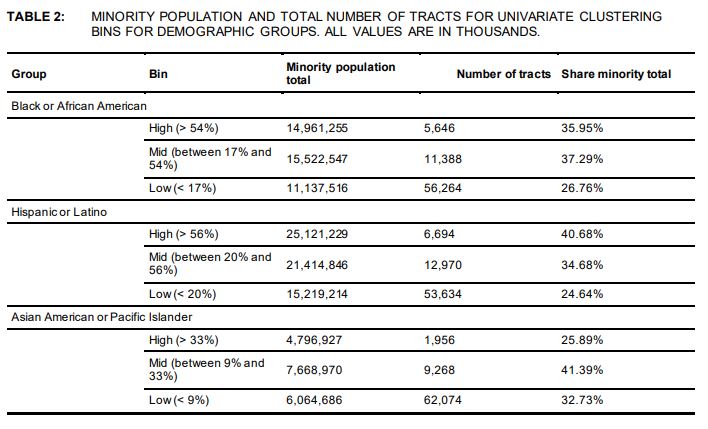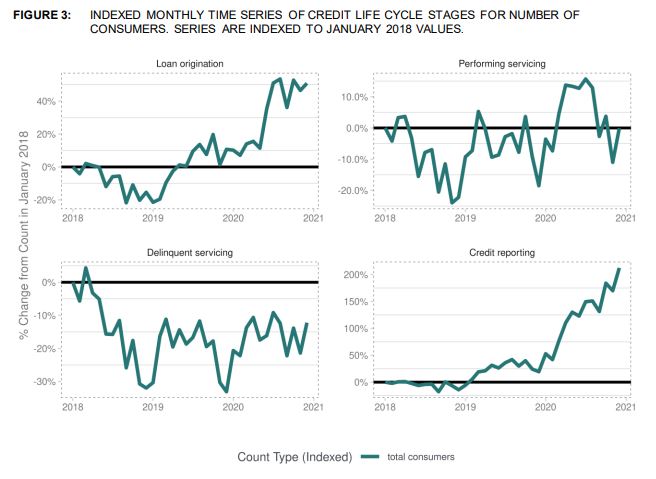

Washington, DC – SEP 23, 2021 – The Consumer Financial Protection Bureau (CFPB) today released its first in-depth report analyzing complaint submission patterns by U.S. Census tract. The report, “Consumer complaints throughout the credit life cycle, by demographic characteristics,” finds that the complaints from wealthier communities and communities with higher percentages of white, non-Hispanic residents were more frequently about loan origination and performing servicing, while the complaints from communities of color and lower income communities were more frequently about credit reporting, identity theft, and delinquent servicing.
The findings are based on the nearly 1 million consumer complaints submitted to the CFPB between 2018 and 2020. The report uses a novel approach to classify complaints by matching the relevant consumers to census tract-level U.S. Census demographic data. Today’s report highlights the value of consumer complaint data for understanding the varied experiences of consumers using consumer financial products and services.

“Today’s report confirms that the experiences and concerns of communities, with consumer financial products and services, vary by race and wealth,” said CFPB Acting Director Dave Uejio. “Our consumer complaint data is a crucial tool for understanding varying consumer experiences, including across racial and economic divides.”
The report, the first analysis of its kind, finds that consumers from lower income and predominantly Black and Hispanic communities submitted credit reporting and delinquent servicing complaints at a higher rate per resident than consumers from higher-income and predominantly white, non-Hispanic communities, who were more likely to submit complaints related to loan origination and performing servicing. Asian American and Pacific Islander communities had higher rates of submitting credit reporting complaints than predominantly white, non-Hispanic communities; however, they also had a lower share of delinquent servicing complaints.
Some of the report’s other findings are:
- Complaints about loan originations increased by nearly 50% over the course of 2020, driven largely by mortgage complaints. This increase was centered in higher-income neighborhoods and neighborhoods with fewer people of color.
- Neighborhoods with the highest share of white, non-Hispanic consumers submit complaints about loan originations at more than twice the rate of neighborhoods with the highest share of Black consumers.
- Consumers from neighborhoods with the highest share of Black residents submit the most complaints per resident. Census tracts with the greatest share of Black residents (95% and over) have estimated complaint rates that are double the rates for tracts with the lowest share (5% and under).
- Lower income census tracts (those at or below 40% of their area’s median income) submit around 30% more complaints per resident than census tracts at around 100% of their area’s median income.
- Lower-income and communities of color are more likely to submit complaints about credit reporting, identity theft, and delinquent servicing, while higher-income and majority white, non-Hispanic communities are more likely to submit complaints about origination and performing servicing.
The findings from today’s research brief will help inform the CFPB’s work. The CFPB will continue its research into consumer complaint data as part of its larger commitment to put consumers, and their varying experiences with consumer financial products and services, at the foundation of all its work.
If you are having an issue with a consumer financial product or service, you can submit a complaint to the CFPB at www.consumerfinance.gov/complaint. We’ll work to get you a response from the company.
###
The Consumer Financial Protection Bureau (CFPB) is a 21st century agency that helps consumer finance markets work by making rules more effective, by consistently and fairly enforcing those rules, and by empowering consumers to take more control over their economic lives. For more information, visit www.consumerfinance.gov.











Facebook Comments